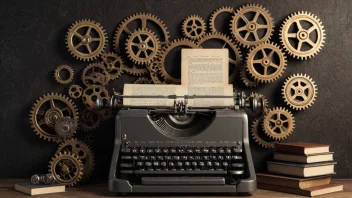Literary devices are the tools authors use to enhance their storytelling, evoke emotions, and convey deeper meanings in their works. Whether you’re a seasoned reader or someone who has just started exploring the vast world of fiction, understanding these devices can significantly enrich your reading experience. This article aims to help you identify and appreciate various literary devices commonly found in fiction.
One of the most fundamental literary devices is metaphor. A metaphor makes a comparison between two unrelated things, suggesting they are alike in some way. For example, in Shakespeare’s play As You Like It, he famously writes, “All the world’s a stage.” This metaphor implies that life, much like a stage performance, has various roles and acts that individuals play. Recognizing metaphors can help readers gain insights into the themes and emotions the author wishes to convey.
Similes are similar to metaphors but often use the words “like” or “as” to draw comparisons. For instance, saying “her smile was as bright as the sun” vividly illustrates the brightness of her smile, allowing readers to visualize and feel the warmth. Identifying similes can enhance your enjoyment as you appreciate the creativity of the author’s language.
Another crucial device is imagery, which involves using descriptive language to create vivid pictures in the reader's mind. Authors often employ sensory details—sight, sound, taste, touch, and smell—to immerse readers in the world they’ve created. A strong example is found in the opening paragraph of The Great Gatsby by F. Scott Fitzgerald, where the lush descriptions of the setting transport the reader directly into the opulence of the 1920s.
Symbolism is also a powerful literary device. It occurs when a character, object, or event represents a larger idea or concept. For example, in To Kill a Mockingbird, the mockingbird symbolizes innocence and the destruction of innocence through the character of Boo Radley and Tom Robinson. By recognizing symbols, readers can engage with the deeper meanings of a text and its commentary on society.
Additionally, understanding foreshadowing can greatly enhance your reading comprehension. This device hints at events that will occur later in the story. For instance, in Harry Potter and the Sorcerer’s Stone, the mention of certain magical items or events serves to prepare readers for future developments, adding layers of suspense and anticipation.
Lastly, the use of alliteration and assonance can contribute to the musicality of a text. Alliteration is the repetition of consonant sounds at the beginning of words, while assonance involves the repetition of vowel sounds. These devices can create a lyrical quality, making the reading experience more enjoyable.
In conclusion, recognizing and appreciating literary devices such as metaphor, simile, imagery, symbolism, foreshadowing, alliteration, and assonance can deepen your understanding of fiction. By exploring these elements, readers can uncover the layers of meaning in a text, allowing for a richer literary experience. As you dive into your next novel, keep an eye out for these devices, and let them guide you through the intricacies of storytelling.






